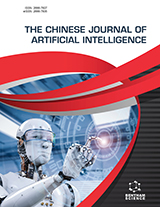Abstract
The difficult subject of automatic recognition has attracted a lot of interest
lately since it has so many uses in so many different industries. Face recognition is one
of those difficult problems, and as of right now, no method can offer a reliable response
in every circumstance. A novel method for recognizing human faces is presented in this
research. This method employs a two-dimensional discrete cosine transform (2D-DCT)
to compress photos and eliminate superfluous data from face photographs utilizing an
image-based approach to artificial intelligence. Based on the skin tone, the DCT
derives characteristics from photos of faces. DCT coefficients are calculated to create
feature vectors. To determine if the subject in the input picture is “present” or “not
present” in the image database, DCT-based feature vectors are divided into groups
using a self-organizing map (SOM), which uses an unsupervised learning method. By
categorizing the intensity levels of grayscale images into several categories, SOM
performs face recognition. An image database including 25 face pictures, five
participants, and five photos with various facial expressions for each subject was used
to complete the evaluation in MATLAB. This method's primary benefits are its highspeed processing capacity and minimal computing demands, both in terms of speed and
memory use.






















